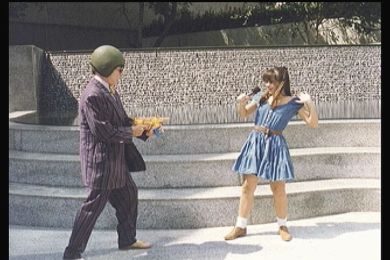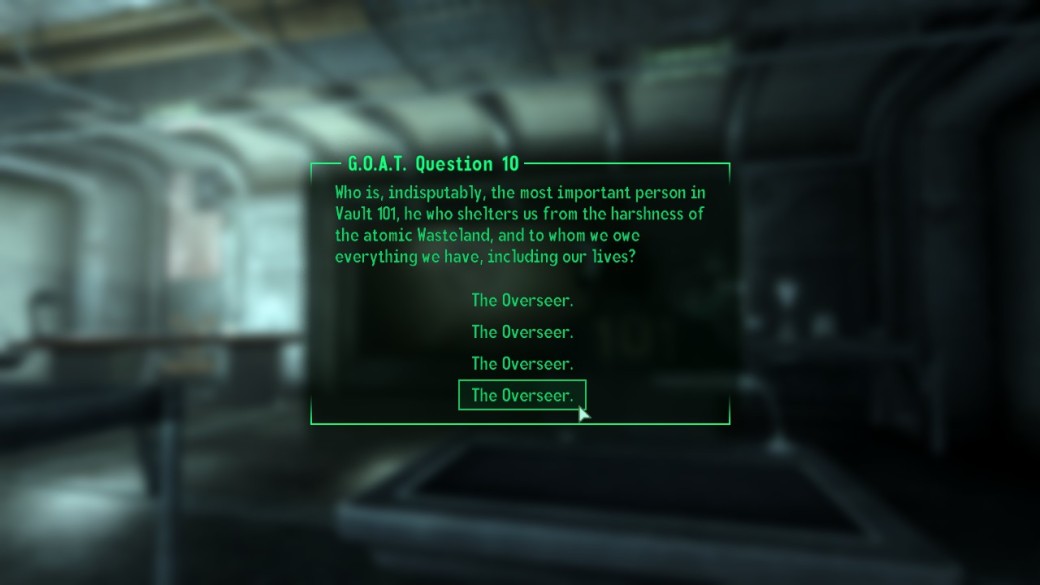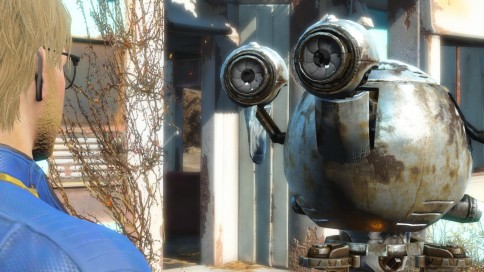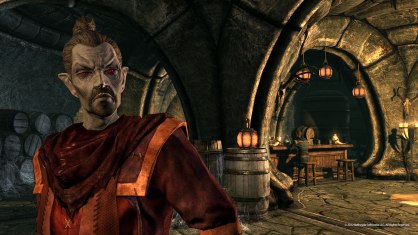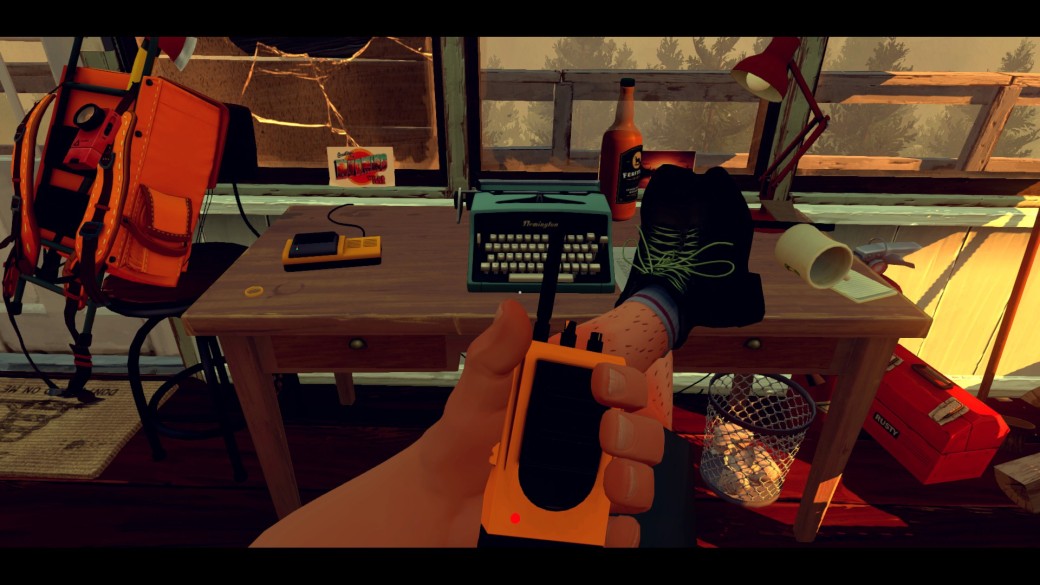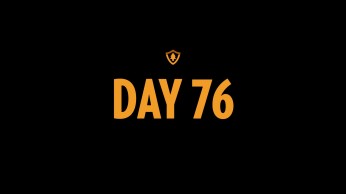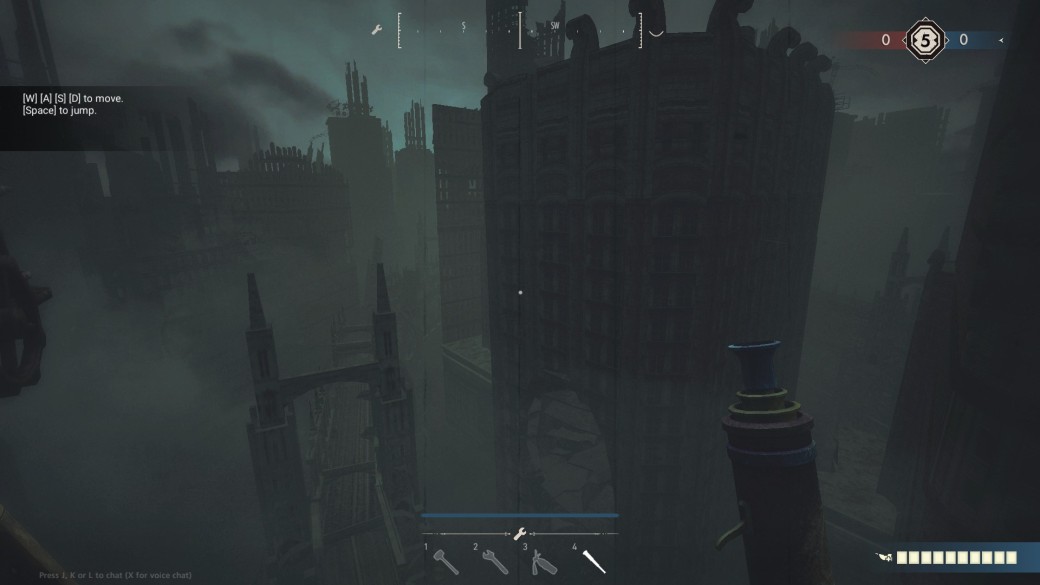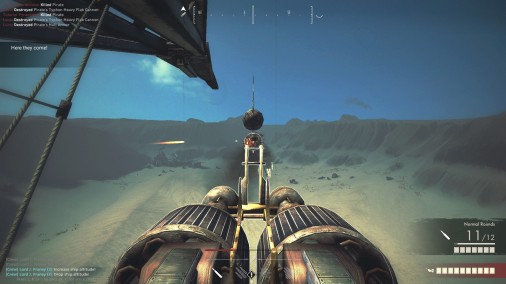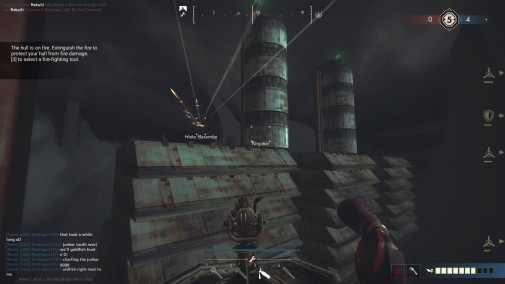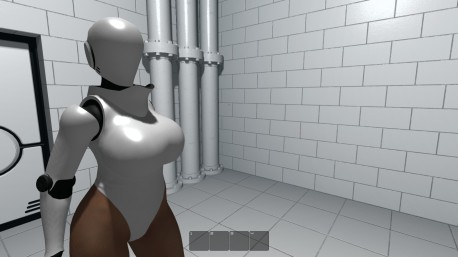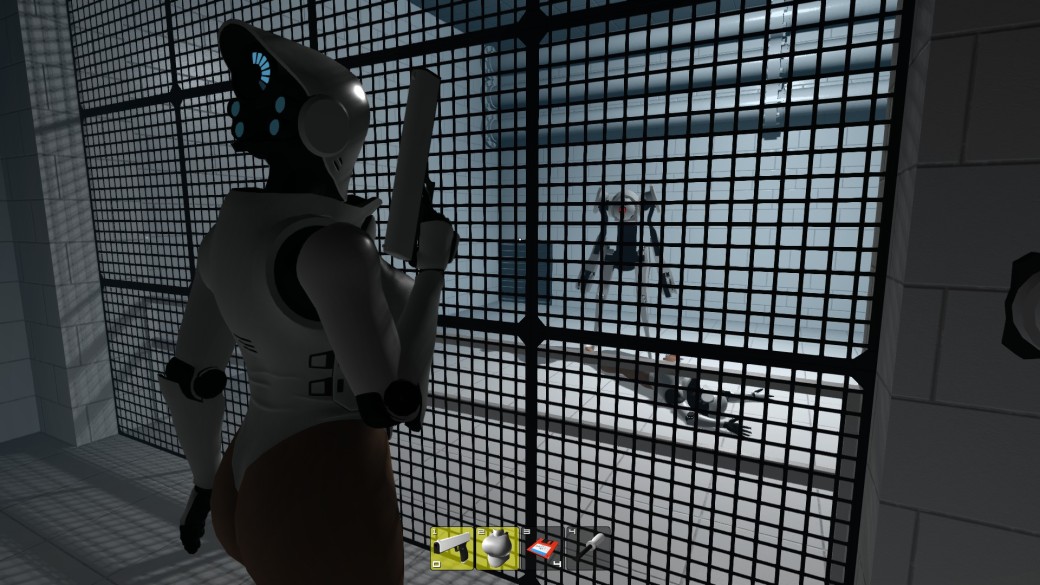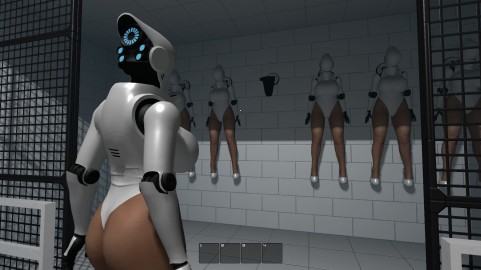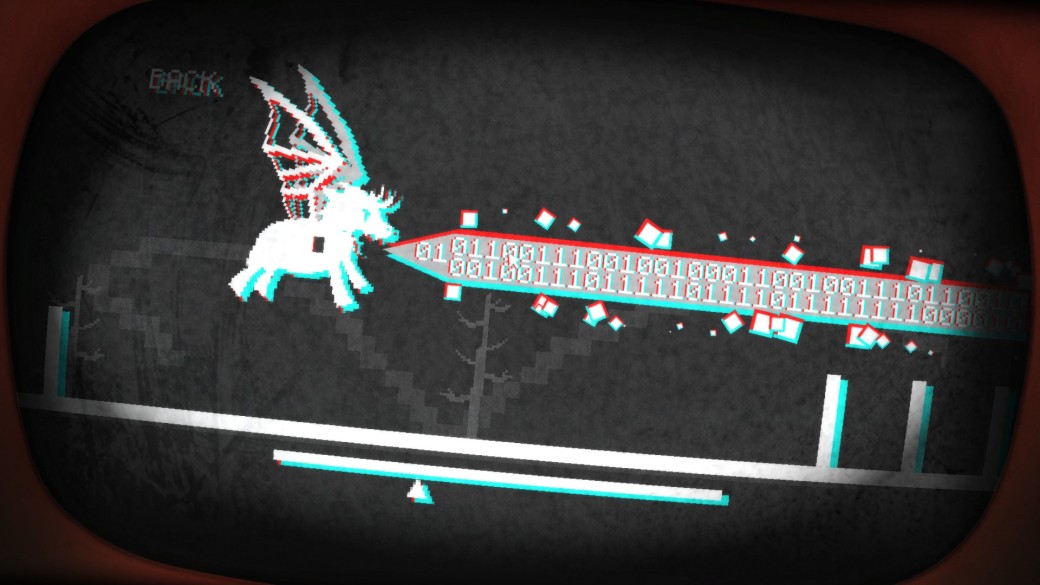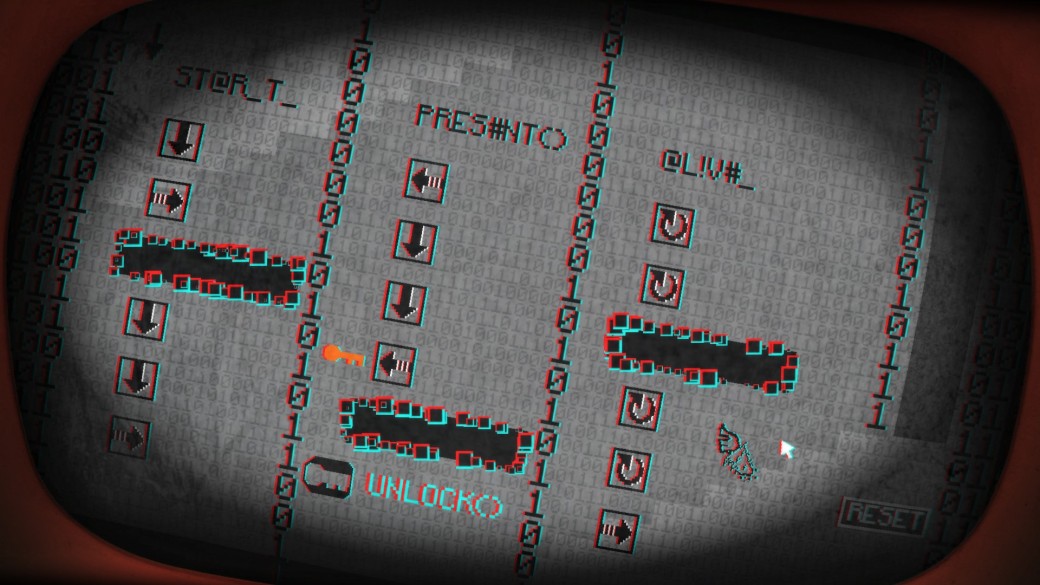THE FOLLOWING ARTICLE CONTAINS SPOILERS FOR READ DEAD REDEMPTION AND RED DEAD REDEMPTION 2.
Hero, villain and tragic figure of Rockstar’s world-renowned western franchise, Dutch Van Der Linde arguably has just as much right to the claim of “main character” of the Red Dead series than John Marston, Arthur Morgan, or that other one from the first game that nobody remembers.
But the funny thing about Dutch is just how much talk he inspires from the series’ fans. Established protagonists Arthur Morgan and John Marston aren’t two-dimensional by any means, but their needs and desires are largely quite simple – protect people they like, acknowledge that the world is moving on, maybe try to ease up on quite so much senseless killing; a chore list we can all get behind.
Dutch, on the other hand, is a lot harder to pin down, especially when looking at what he actually wants and what might be driving him underneath everything else. We’ve seen him go from a caring, heroic father figure to an unrepentant, self-satisfied murderer, compromising nearly every ideal he claimed to care about from the beginning of Red Dead Redemption 2.
It doesn’t even help when you look it what he says, because his general life philosophy seems a little vague. For somebody who never shuts up about freedom, liberty, the hypocrisies of civilisation and the beauty of the “savage utopia”, pulling anything concrete from what he says is a lot harder than you’d think, and that’s definitely by design. Rockstar clearly put a lot of hundred-hour weeks into making Dutch as charismatic as possible, but as time progresses we get the sense that a lot of what he’s talking about might just be hot air, a load of high-minded rhetoric that’s lacking in any real substance.
Maybe this is why he’s also a character defined by contradictions and double-standards. He’s openly cynical about Saint Denis, yet fits in perfectly at one of their illustrious high-society parties, laughing with a cigar in one hand and a drink in the other. He’s filled with contempt for civilisation and the lies it tells, yet wears slick, stylish clothes, constantly cons people, carries personalised weapons and practices inspirational speeches when he thinks nobody is looking. And, of course, he kills strangers one moment, yet shows unbridled compassion the next.
So what is at the core of Dutch’s character? Anarchic, uncaring evil? A romantic spirit warped by a world it doesn’t fit into? A poet, a warrior, a leader? No, of course not. These aren’t actual personality traits, these are images Dutch projects to cover up or even hold up the real core of his being: Ego. Sure, anybody who plays either game for more than ten minutes can tell you that Dutch’s sense of self-worth could rival Kim Jong-Un’s, but I suspect it goes deeper than just another character flaw, the root cause of his ideals, his motivations and eventually his downfall.
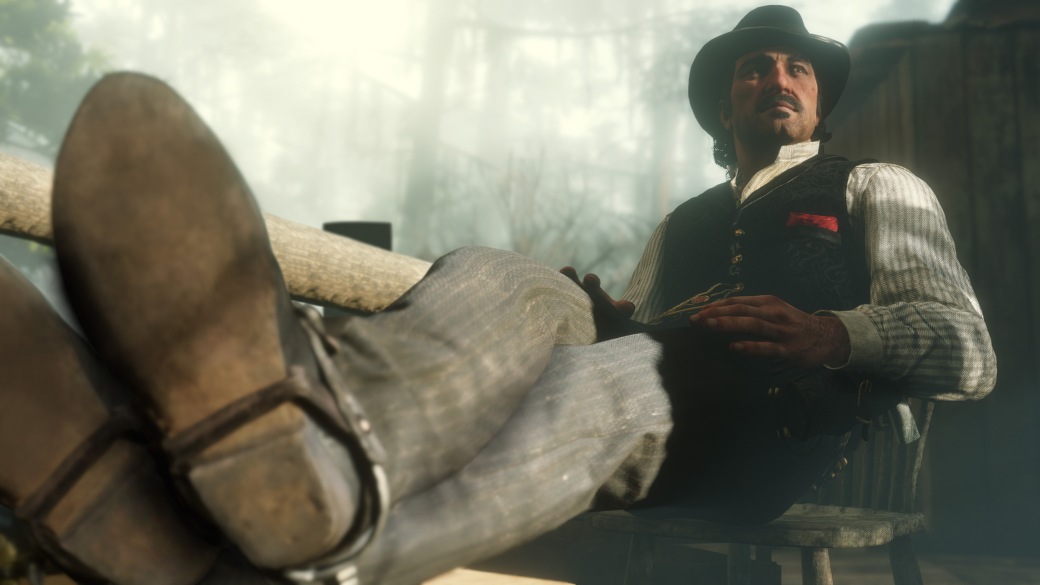
A man with weapons, a god-complex, a disinterest in law, utterly devoted followers and a major chip on his shoulder. What could go wrong?
Let’s take a step back. We know that Dutch Van Der Linde was raised largely by his mother but left home at fifteen, forming a friendship with Hosea, a friendship of some sort with Colm O’Driscoll, and developing an ideology (of sorts) based on personal freedom and unconstrained anarchy. Later on he split from O’Driscoll after some bloodshed, and formed his own gang, placing himself at its centre and framing it around the aforementioned ideology. There’s clearly something of the religious cult leader about him, talking about a promised land – Tahiti, or maybe Australia – as well as giving passionate speeches that sound good until you start thinking about them. And of course, constantly telling his followers and friends to “have faith.” Dutch says that one so often it would be on his business cards if he had them.
But honestly, I suspect that Dutch is working backwards to feed his sense of self-worth. The paradise that Dutch pushes often has a worrisome air of “survival of the fittest” about it, but then again, why would that be a problem to him? He’s charming, handsome, intelligent, surprisingly educated, an expert fighter and master gunslinger. In a world where power is rewarded – such as the brutal chaos of the Wild West – Dutch reaps the rewards more than anybody. No wonder he developed all that pride. He’s practically the gold standard for Western outlaw heroics, and the people around him noticed that.
Problem is, the encroaching civilisation doesn’t work that way. As the West was slowly tamed, Dutch saw a vision of America coming where all men became quiet cogs in a grand, grey machine, and this terrified and revolted him. If he was made to be like everybody, he would suddenly be a nobody, the worst thing possible for a man like him.
So he builds up the Van Der Linde gang, with a sexy Robin Hood image and non-specific utopian ideals, dedicated to showing up the hypocrisies and failings of this new America. Obviously he’s the protagonist of this story. His supporting cast embodies the forgotten people, those who suffer from prejudice or never had the chance to make anything of themselves. Every job they pull is a strike against the establishment, and it adds to his infamous reputation…
… And then it all starts to come slowly crashing down around his ears as events makes it clear that however hard Dutch pushes, America can push back even harder. Dutch’s original goal seems to be to hit a bunch of valuable targets representing the establishment – banks, trains, corporations, oil wells, big business and those damned fat cats, etc – before making off with these riches to some distant land and setting up their own paradise, designed specifically to be this new America’s opposite. Lush, primal, simple, free, a final spit in the eye of Uncle Sam.
It won’t work. Dutch’s thinking is innately old-school and he wants to win on those terms, but the rules have changed and now he’s struggling to keep up. It’s implied that in the old days that when the heat got too much you could just keep going westward, running past the frontier into the wilderness, but that doesn’t work when civilisation stretches from one coast to the other. It’s not just a few dusty sheriffs pinning ten dollar bounties on the jailhouse wall, now it’s organised law enforcement and federal agents with money, manpower, and a jurisdiction that spans the whole country. Robberies and heists become harder to pull off, and even when they succeed, like the train robbery early on, they have lasting consequences that they can’t easily escape. The law is everywhere.

Dutch stands with his friends – but also a little in front of them.
All these things make Dutch feel small and insignificant, which is why the few victories he can claim – an escape from a botched job, a piece of untouched countryside to settle in, or manipulating a group of Native Americans to attack the army later on – all of these things make him feel like he has a chance of winning, and give him the satisfaction of damaging his enemy, whether it actually helps his gang or not. They make him feel big, but the failures far outweigh the successes, and the pressure starts to mount on him, psychologically and socially.
So what we have here is a man who has convinced himself that he can win an impossible fight and has staked his self-worth on the outcome, as well as the lives of about twenty people who are all starting to notice that he’s not as infallible as they thought. When he keeps barking at them all to have faith, it’s a sign that his ego is taking a pounding and he just wants them to go back to the blind obedience they always had. He insists that the gang’s troubles aren’t his fault, it’s their fault for doubting him, because how could he ever put a foot wrong? If they could just believe in him as a saviour again, this would all start going back to how it should.
It won’t, obviously. Dutch soon begins to crack under the strain, especially after the heist at Saint Denis and Hosea’s death, and starts shedding his principles as dead weight, killing innocent people and beginning to look at his friends with distrust and resentment. But at the same time, he needs them, because if they won’t love him and call him their saviour, what’s been the point of all this? It’d be another failure for the list.
Compromising his ethics one after the other, Dutch doesn’t so much change as he is reduced down to the simplest version of himself: an egomaniac who wants to be lionised by the world, and eager to hurt the civilised part of it that makes him feel small and insignificant. He’s not entirely without morality, at least not yet, but it’s only a matter of time and the few good urges he has left feel more like a disguise than a real part of his being.
Which brings us to Micah, the moustachioed menace who purrs poison into Dutch’s ear and pushes him to more dangerous extremes than ever. Had Micah been acting this way to anybody else, Dutch would’ve likely seen him for the self-serving monster that he is, but flattery gets you a lot when it comes to a man who seems to need praise more than oxygen. Micah is certainly more cunning than people give him credit for, recognising the god-complex inside Dutch where Hosea and Arthur either don’t see it or don’t want to, and he uses this to manipulate him, telling him that every dark impulse he has is the right one. He feeds Dutch’s ego to bursting point, telling him the thing he wants to hear most: anybody who disagrees with you is wrong, and everything you say is right, simply because it was YOU that said it. Sure, Dutch probably knows on some level that this is bullshit, but admitting that would mean cutting his last lifeline for validation. Not only that, but the little rat is encouraging his pointless war with Modern America, making it Dutch’s highest priority. But while Dutch does it for deep-seated psychological reasons and a paper-thin ideology, Micah simply wants to make money and indulge his love of killing.
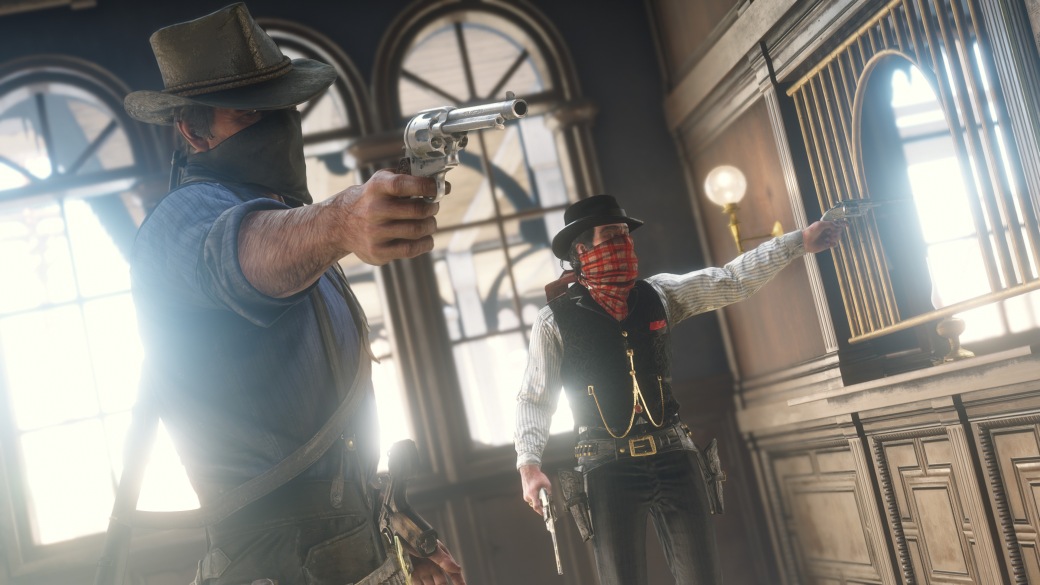
Dutch’s desperation drives him to extremes, which only makes his many failures sting all the more.
The big turning point is when Dutch refuses to rescue John Marston from prison, seemingly for no reason. It’s surprising to say the least, because this should be exactly what Dutch would normally want, right? A dynamic outlaw adventure that tweaks the nose of Johnny Law, sends ripples out across the State and cements their ideals of brotherhood and unity. But instead, Dutch retreats back from the opportunity, uncertain and tentative, telling them to wait before they do anything, that he has to think of a plan first.
We never get a firm explanation as to why Dutch keeps dragging his feet here, especially when he was so gung-ho about reuniting the gang in the face of the early Blackwater debacle. Who knows, maybe Dutch was beginning to suspect John was a traitor and wanted him to suffer as revenge. Maybe Dutch wanted John to die so that the gang would rally in anger and see the law as Dutch does. Maybe he really was trying to come up with that perfect plan, and just needed a little more time to make it.
Perhaps it’s all of these, or none of these. Nonetheless, I suspect that the main reason was that Dutch had begun to suspect he wasn’t going to win this one, and the thought of losing yet again was terrifying to his ego. Problem is, it’s also humiliating to see his gang shouting at him to do something, so he can’t win either way. He’s sold himself for decades as “the guy with the plan,” but now he has no plans, his stock as a leader is in freefall, and law is closing around them. So when Arthur and Sadie go behind his back and rescue John anyway, it’s a sign that they’ve lost respect for his leadership – and boy, does that just ruffle his soul patch, especially coming from Arthur, now his oldest living friend. In his mind, it’s the ultimate betrayal.
And of course this leads to Dutch abandoning Arthur to his death during the raid on the oil fields, followed by the awkward ride back home when Arthur ends up surviving. Dutch is being forced to choose again and again which matters to him more – his comrades, or his pride-fuelled vendetta, and he keeps picking the second option, pushed on by Micah, struggling to square in his own head the clear, depressing difference between what he started as and what he’s become.
It’s all too much by the end. Dutch sees a suit-and-tie-wearing world rallied against him, the corruption beginning to touch even his oldest friends. He makes further trouble by shooting Leviticus Cornwall, a pointless, gleeful strike against the fat cats that only makes their situation worse. Finally the gang implodes in a heady mess of blood, gunpowder and tuberculosis, and Dutch vanishes into hiding, at least until John, Charles and Sadie go hunting for Micah and discover that he and Dutch are still working together. Micah takes Sadie hostage, the Mexican stand-off kicks in, John appeals to Dutch’s long-dead nobility, and in a moment of shock, witnesses his former mentor turn on Micah and shoot him in the chest, saving Sadie’s life.
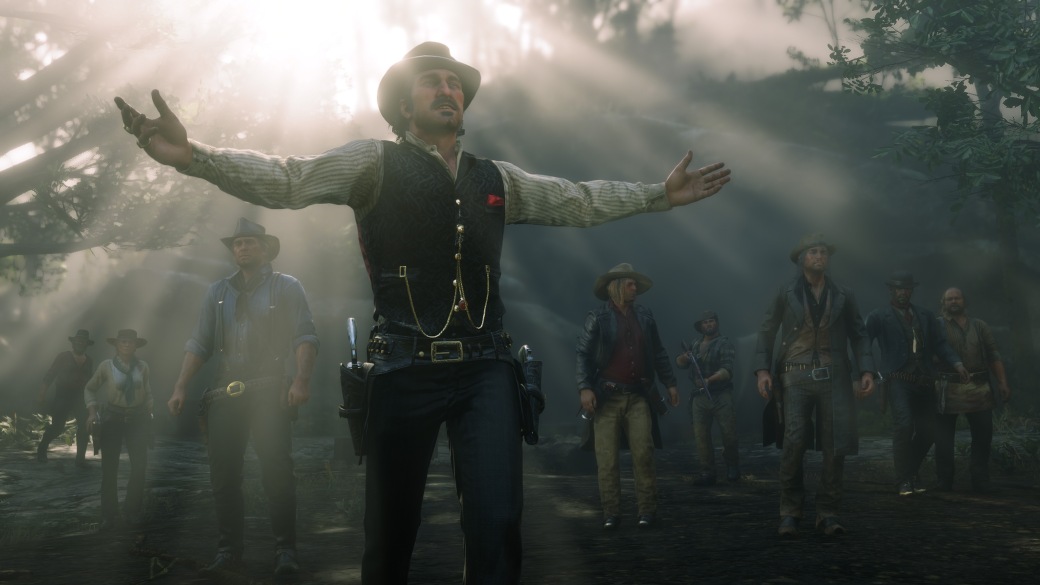
High ideals are thrown away for base feelings and urges, but Dutch is determined not to realise this, and that the mangoes of Tahiti are getting further and further away.
This might sound like a heroic thing to do, and it largely is, but it’s worth reminding everybody that Dutch has been riding with Micah for a while, a man who had been reportedly slaughtering families without a problem. In fact, I suspect that Dutch killing Micah is less about the heroic angle as it is about something Micah says moments before the event. When John accuses him of murdering Arthur, Micah simply scoffs and says “it’s a new century!”
It’s the worst thing he could have said. Dutch sees Micah for what he is, sees how low he’s fallen to be working with somebody like that, and sees a person holding an injured woman hostage for his own ends, all while justifying his actions because of the march of modernity. Nothing could’ve been more abhorrent to the younger Dutch, and so he blows a hole in Micah’s torso before leaving the Blackwater fortune to his former friends, a last act of heroism before we see him again in Red Dead Redemption.
Sadly, several years later, Dutch’s honour meter has taken a turn towards the red, murdering innocents without a thought and tormenting John for fun. There’s even a moment in which Dutch holds a woman hostage at gunpoint, just like Micah did. He uses a modern semi-automatic pistol, a gatling gun and a typewriter without recognising or caring about the irony of it all. He’s become the thing he hated the most, and he can’t even see it.
John nearly gets to live out the true American dream – hunting down and murdering your boss – only for Dutch to trump him at the end by throwing himself off a cliff and committing suicide, though not before a little gunpoint monologue (boy, Rockstar loves having its characters speechify with a pistol shoved up their nose) in which the old man comes the closest he’s ever been to seeing the truth of himself and his pointless, painful predicament.

“We can’t always fight nature, John. We can’t fight change. We can’t fight gravity. We can’t fight nothing. My whole life, John, all I ever did was fight. But I can’t give up neither. I can’t fight my own nature. That’s the paradox, John. You see? Our time has passed.”
In the heyday of the Wild West, Dutch Van Der Linde was a leader, fighter and rogue. And under that heady spell, thought he could take on the might of decadent, civilised conformity and win, then make his way somewhere truly free with pockets full of money and friends beside him.
He couldn’t. Nobody could. And the more he failed, the angrier he got. He made compromise after compromise, leaving behind his ideals, his friends, his morality and finally his sanity, certain that he could win next time, that a legion of bowler-hatted bureaucrats couldn’t hold him down forever, that he’d become the hero of the West he knew he was. That delusion was the last thing he let go of, moments before he took his own life rather than be captured and letting the government beat him one last time. What Dutch wanted never really changed, but a long time ago he decided he’d rather be victorious than be noble, the true tragedy of his character. His anger came from fear, his heroism came from self-obsession, and his vision, tragically enough, came from delusion.

